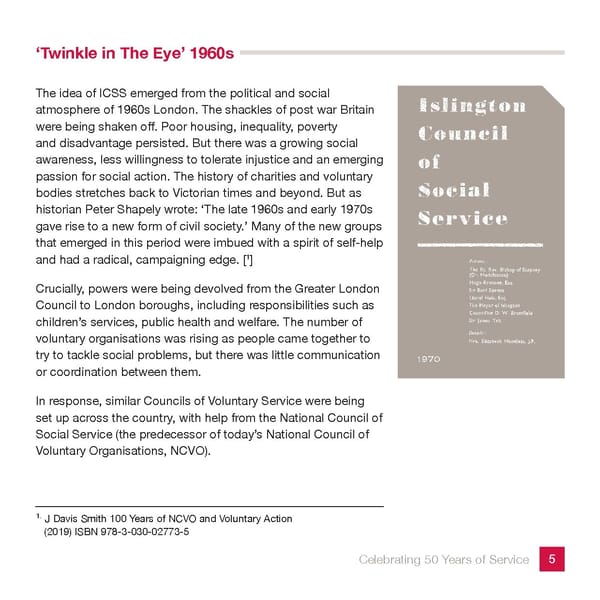‘Twinkle in The Eye’ 1960s The idea of ICSS emerged from the political and social atmosphere of 1960s London. The shackles of post war Britain were being shaken off. Poor housing, inequality, poverty and disadvantage persisted. But there was a growing social awareness, less willingness to tolerate injustice and an emerging passion for social action. The history of charities and voluntary bodies stretches back to Victorian times and beyond. But as historian Peter Shapely wrote: ‘The late 1960s and early 1970s gave rise to a new form of civil society.’ Many of the new groups that emerged in this period were imbued with a spirit of self-help 1 and had a radical, campaigning edge. [ ] Crucially, powers were being devolved from the Greater London Council to London boroughs, including responsibilities such as children’s services, public health and welfare. The number of voluntary organisations was rising as people came together to try to tackle social problems, but there was little communication or coordination between them. In response, similar Councils of Voluntary Service were being set up across the country, with help from the National Council of Social Service (the predecessor of today’s National Council of Voluntary Organisations, NCVO). 1. J Davis Smith 100 Years of NCVO and Voluntary Action (2019) ISBN 978-3-030-02773-5 Celebrating 50 Years of Service 5
 VAI - Celebrating 50 Years of Service Page 4 Page 6
VAI - Celebrating 50 Years of Service Page 4 Page 6